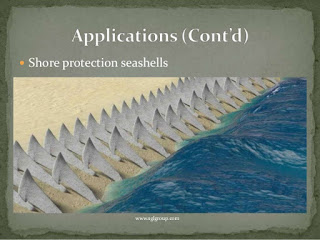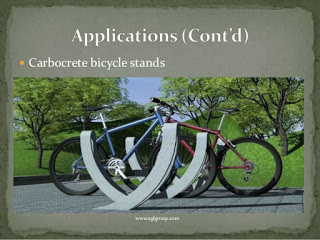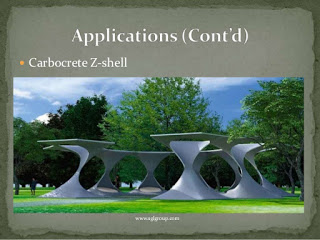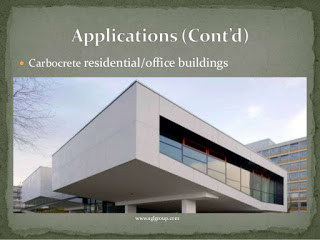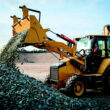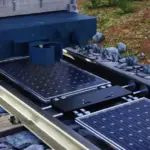Carbon Fiber Reinforced Concrete sometimes called carboconcrete is a type of concrete that is reinforced with carbon fibers so it’s also known as “Carbon Reinforced Concrete”; It is a highly stressable lightweight composite construction that combines special fine grain ultra high-strength concrete and carbon fibers. It has higher strength than steel with quarter of its weight.
As for brittle material in general, concrete is strong under compression and weak under tension or flexure. This problem may be alleviated by the addition of short carbon fibers (typically 10 micrometer in diameter). Almost all the previous work on carbon fiber reinforced concrete was conducted in Japan and it showed that the use of carbon fibers in the amount of 2 vol % approximately doubled the flexural strength. Recent work performed in U.S.A by Zheng and Chung showed the approximate doubling of the flexural strength with only 0.3 vol. % carbon fibers – an improvement resulting from the use of chemical agents.
Basically Carbon Fiber Reinforced Polymer, Carbon Fiber Reinforced Plastic or Carbon Fiber Reinforced thermoplastic or often simply carbon fiber is an extremely strong and light fiber-reinforced plastic which contains carbon fibers.
Carboconcrete has many applications in the field of civil engineering. It is now studied in academics and at post-graduate level for research. It is cost-effective and sustainable approach for strengthening of concrete or masonry structure. In most of the cases the CFRB (Carebon Fiber Reinforced Polymer) is used as retrofitting to strengthen an existing structure or a replacement of pre-stressing.
It can be used to increase the load carrying capacity of the existing structure for example if a bridge was constructed in the past with some service load which is now subjected to a greater load can be made strong by using retrofitting.
The first ever use of carbon reinforced polymer was done by Thomas Edison as filaments for early light bulbs because of their high tolerance to heat which made these fibers ideal for conducting electricity.
In early 1990s, researches showed that carbon fibers can be used inside the concrete instead of steel reinforcement showing a significant improvement in the flexural and tensile strength of concrete.
Carbon Fiber Vs Steel
- Carbon Fiber is 75% lighter than steel
- More durable and corrosion free
- It is 5 times higher in tensile strength
- It is 2 times higher in stiffness
- And Is also have more temperature tolerance.
Due to high tensile strength the sections can be smaller and thus more Earthquake resistance. As less materials are needed for maintenance and construction thus they are more eco-friendly. And due to low weight are easy to handle. Due to high abrasion resistance they are more suitable for highway construction.
Some of the rare disadvantages include;
- High initial cost as the material involved is expensive
- Lack of knowelge is there as no implementation is made yet and also no special codes are there. Due to high thermal conductivity it has high HVAC consumption.
Applications
Here are some of the ideas researchers have found to use carbo-concrete or carbon reinforced concrete
Conclusion
Carbon reinforced Concrete pushed the limits of creativity and flexibility in design. Made it possible to build unique structures that can withstand very high loads. Save maintainance cost on the long run.


